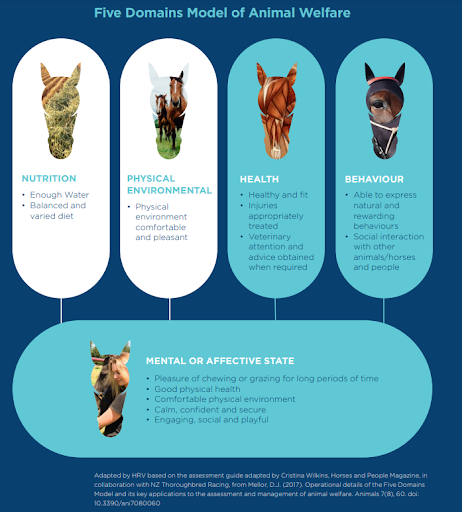The racing industry gets a bad wrap in the court of public opinion. Some industry norms and practices are in desperate need of reform. Recent media exposes like the ABC report shone a light on the industry, including its broken aspects, prompting many Australians to question whether or not the thoroughbred racing industry is even capable of operating ethically.
Racing is, however, definitely here to stay with the Australian racing industry valued at $9 billion, contributing over 80,000 full time jobs (direct and indirect) and prompting almost $6.3 billion of direct spending. It’s also one of the biggest tax contributors to State governments, ultimately assisting with funding infrastructure, schools and other essential services we use every day.
Australians see horses as more than commodities and have been calling for animal welfare to be brought into the spotlight more in recent years.One group of professionals servicing the industry have a hugely positive impact and high responsibility, helping to guide the industry to a more socially acceptable model of operation.
I’m talking about equine vets.
From being present on race days to providing care on a day-to-day basis, the equine vets servicing the racing industry are the ultimate stewards of animal welfare. Vets working in the racing industry need to be proactive in ensuring that treatment of their patients is evidence-based rather than economics-driven and understand the importance of their role as a respected voice with responsibilities to the public, their clients and the profession as a whole.
Following the ABC’s damning 7.30 Report, Dr. Sam Nugent, President of the Australian Veterinary Association’s Equine Veterinarians Group said: “As veterinarians we found the treatment of the horses in the leaked video footage highly distressing. The AVA would like to see all parties involved in these illegal practices held accountable for abhorrent and illegal actions.
“…horse racing authorities that are not enforcing their own welfare rules for post-career horses need to be held accountable. Breaches of animal welfare cannot be tolerated.”
In 2019, Racing Victoria released an updated Equine Welfare Strategic Plan, committing an investment of $25 million to the welfare of horses in the industry both during their time in the sport, and beyond. Key to carrying out this 3-year plan are the vets that work with both the Equine Welfare and broader Integrity Department. The plan was built on six pillars; Governance and Standards, Population Dynamics, Racing, Post-Racing, Industry Culture and Industry Reputation.
Turning Melbourne Cup tragedies into lessons learned
A series of high-profile deaths occurring during runnings of theMelbourne Cup in recent years prompted inquiries and recommendations of new safety measures. The industry has been quick in adopting some of these recommendations.
One positive outcome has been the investment by Racing Victoria in new technologies to enable vets to diagnose predisposing issues before they progress to injuries. This resulted in all potential Melbourne Cup starters having to undergo bone scans prior to being accepted into the great race of 2021. This requirement was a step-change for industry with racing jurisdictions around the world watching closely, both in terms of outcomes for the horses and industry participants. Currently this has only been applied to Melbourne Cup horses, but with reductions in the costs through innovation or further industry subsidies this process may eventually become best practice horse husbandry across all the performance horse industries.
In addition to this initiative, in June 2021 Racing Victoria announced a new subsidy scheme for owners and trainers to offset the cost of advanced diagnostic imaging on Victorian thoroughbreds.
As part of the sport’s proactive approach to injury prevention, the Diagnostic Imaging Subsidy Program was launched to help minimise the risk of serious injuries to thoroughbred racehorses by using advanced veterinary technology for early detection and intervention. This program was being piloted through 2021.
Equine welfare in harness racing
The harness racing industry is also acutely aware of the issues that affect their industry and the public’s perception. Following a State Government review of harness racing in Victoria and growing community attention on the welfare of horses used for sport Harness Racing Victoria implemented an Equine Welfare Framework and rehoming program. Their Equine Welfare Framework goes so far as to factor in the mental wellbeing of their horses. Launched in 2015, the HERO Program (Harness Education & Rehoming Opportunities) actively caters for horses whose racing careers have ended.

The wellbeing of their equine athletes is “central to the future of the Victorian harness racing industry and is a guiding principle in the strategic direction of the organisation.” Their Integrity Department’s website even has a section for people to report animal welfare concerns.
Vets were integral in the development of the harness racing industry’s welfare policy, providing evidence based justifications for rules and regulations to protect the horses in the sport. They also play a key role in maintaining the welfare standards within the industry, informing best practice and animal husbandry thanks to their position in relation to trainers, the key decision makers.
Whilst well intentioned, certain members of the public are quick to call for the immediate ban of racing and use of horses in sport. I find the sweeping statements about racing incredibly reductive. A deeply established industry, racing contributes a sizable amount of money to the economy as well as employment opportunities. Here is where activists find themselves at a stalemate. If we can focus on solutions and demand better for horses in the form of enhanced veterinary care, preventative diagnostics and proactive retirement plans we may find ourselves closer to a resolution. And for that to happen, we must support our equine vets in guiding trainers to better practices that put the horse first.
There is one certainty to how this journey continues: with the use of veterinary services and diagnostic technologies for preventative care which are expected to increase in line with the public’s expectations. This certainly opens the door for those veterinary service providers that are willing to invest in the resources and skill sets required to provide such services, ultimately shaping the racing industries for the better.
- Parkinson’s UK backs Pharmaxis with $5 million to slow the onset of incurable disease with ‘ground breaking’ trial - September 1, 2022
- How this company is developing medtech to support Indigenous community health - August 22, 2022
- A round of ap-paws for PharmAust, changing the ruff prognosis for dogs with lymphoma - August 17, 2022













Leave a Comment
You must be logged in to post a comment.